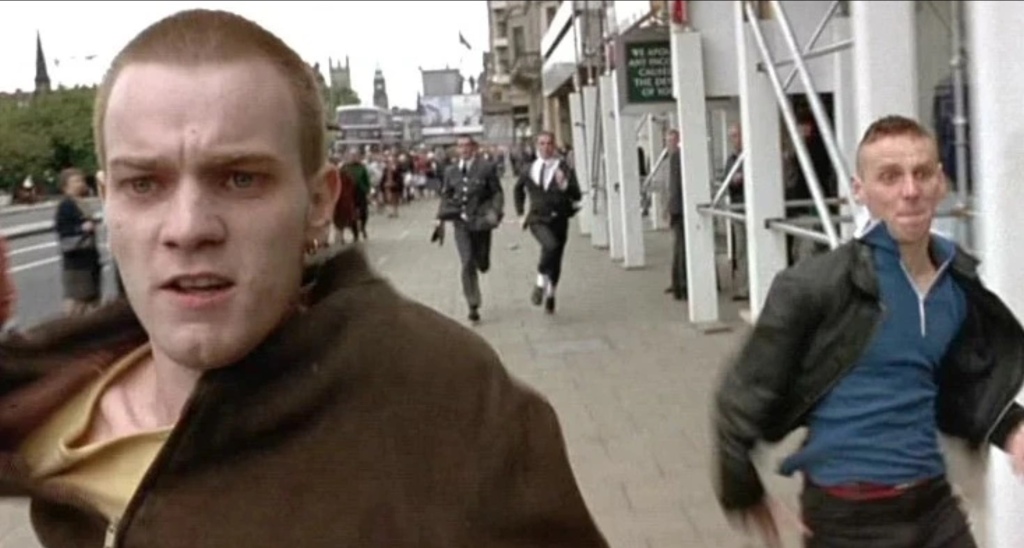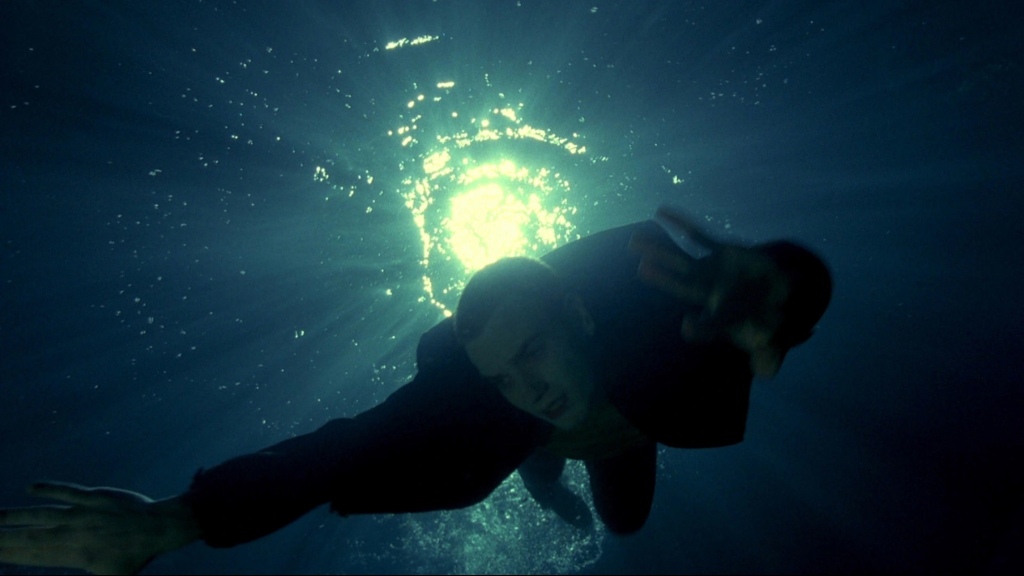Trainspotting (Danny Boyle, 1996) is an adaptation of the 1993 novel of the same name by Irvine Welsh. The film is a product of the filmmaking collaboration made up of producer Andrew Macdonald, writer John Hodge, director Danny Boyle, and actor Ewan McGregor. The film was both a critical and commercial success, being nominated for two BAFTAs – Best British Film and Best Adapted Screenplay, winning the latter.
After realising their debut film Shallow Grave (1994), Andrew Macdonald spoke to Danny Boyle about the prospect of making Welsh’s book into a film after reading it on a plane in December 1993. Boyle was instantly enamoured by the book, excited by its potential to be the “most energetic film you’ve ever seen”. After reading the book, John Hodge set a goal to produce a screenplay that would have a clear three-act structure, lasting 90 minutes whilst also capturing the essence of the novel. Irvine Welsh was impressed that the trio wanted everyone to see the film, rather than just “the arthouse audience”.

Ewan McGregor (stars as Mark Renton), Andrew Macdonald (producer), Danny Boyle (director), Irvine Welsh (author), and John Hodge (writer)
Trainspotting was released during a time of significant social and cultural change in Britain. The 1990s were characterised by the rise of youth culture and the emergence of new subcultures, as well as the growing problem of drug addiction, especially heroin. Trainspotting captures the zeitgeist of this period and instantly became a cultural touchstone for many young people undergoing similar struggles. The film also rejects consumerist values promoted by the Thatcher government, for example during Renton’s famous opening declaration: “Choose life. Choose a job. Choose a career. Choose a family. Choose a fucking big television”.

The film has a notably distinctive visual style, typical of Danny Boyle’s eclectic body of work. Throughout the film, Boyle implements techniques such as freeze frames, jump cuts, and handheld camera work to create a dynamic aesthetic that captures the frenetic lives of the characters. The film’s non-diegetic composed score also serves as particularly prominent contribution to the film’s aesthetic. The film’s mix of electronic music and classic rock creates a heightened sense of energy, reflecting the emotions of the characters.,
Trainspotting’s narrative structure is also particularly noteworthy, being a series of non-chronological vignettes that reflect the narrative structure of Irvine Welsh’s original novel. The film also utilises surreal, dreamlike imagery at certain points, such as during the scene when Mark dives into the “worst toilet in Scotland” in search of his suppositories, serving to reinforce his desperation and degeneration as a drug addict.
